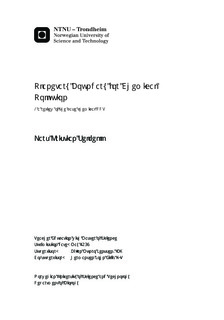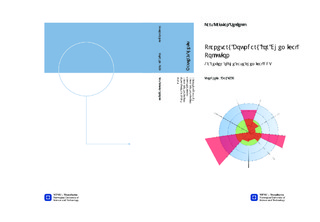| dc.description.abstract | Chemical industry has been given a great deal of attention after several chemicals have shown global distribution and incidents with high toxic effects. The effects observed with some chemicals poses as a threat to both human health and to the environment, and these threats include effects on society and economy, all aspects of sustainable development. With the publication of Planetary Boundaries, by Rockström et al. (2009), a new way of looking at human impact and sustainable development was presented. By dividing human impact between nine different categories, and focusing on global resilience, the reader was forced to reflect and consider whether the current human operations could continue as they have, and for how much longer. The framework within Planetary Boundaries is still not yet complete, with two categories not being quantified, Chemical Pollution being one of them.This review investigates whether a boundary for chemical pollution is possible, through a case study of one single chemical. The selected chemical is DDT, and its metabolites. By setting criteria for a chemical boundary, a suggestion for a chemical boundary for DDT was made. An extensive literature search was used to examine the possible toxic responses to different species, to further assess possible thresholds and slow variable impacts on other planetary boundary categories. Thresholds, boundary levels and additional concerns were among the results of this review. General for bird species a 16-18% eggshell reduction, due to DDT exposure, was set as a boundary level indicating population decline and possible threshold impact, loss of bird species. For raptorial birds a less accurate, but indicative level of 16 ppm of DDE in eggs was set as a level with high risk of raptorial bird species loss. Fish has been given both acute and chronic tolerable exposure concentration levels of DDT. DDT levels of 0,001 µg/L for chronic exposure for both freshwater and saltwater fish, and 1,1 µg/L for freshwater fish and 0,13 µg/L for saltwater fish for acute exposure. Going beyond these concentrations might cause the threshold loss of aquatic species. Additional concerns were given to insect diversity, especially the honey bees, and to humans, especially to groups with additional concerns, such as pregnant females, young children and those with HIV/AIDS.With these thresholds and other underlying theories on combined effects and population resilience, DDT was given a placement beyond safe operation, but within a zone of uncertainty, according to the Planetary Boundary framework. A proposal for a boundary level seemed possible for DDT, using literature review as a method, but could be too extensive for several, and needs to be further discussed together with the proposed criteria for which chemicals to be included. It was difficult to define whether the current use of DDT is a threat to sustainable development, due to the presence of the historic use, and that previous use is still being investigated. It is concluded that it is likely that DDT still has the possibility to pose as an irreversible threat to the globe, depending on several factors such as climate change, the chemical cocktail, and habitat change. | nb_NO |

